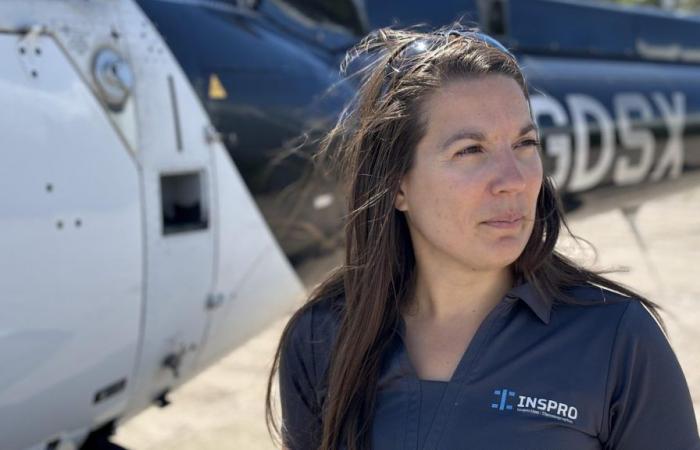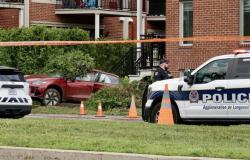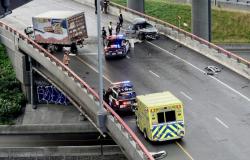
Building inspector Anastasia Luckenuick uses thermography, a thermal imaging technique, to help with SOPFEU in the fight against forest fires. Today, she is participating in operations on the Côte-Nord, which is struggling with numerous forest fires. An enriching mission, according to her, which allows the SOPFEU to detect the unobservable.
Last year, there were major fires in Quebec. […] Then I said, “I don’t know if they need help.” So I sent a message
raconte Anastasia Luckenuick.
The SOPFEU needed it, and so accepted her services. Since then, the thermographer has participated in the operations of the SOPFEU in the Chibougamau region, in Northern Quebec and in the Manic-5 dam region.
She is now deployed at the base of operations of the SOPFEU from Sept-Îles to carry out thermal imaging analyses on the fires north of Port-Cartier and Sept-Îles.
When the firefighters have put out a fire, I arrive afterwards to see if there are any hot spots that they wouldn’t necessarily have found
she says.
On board a helicopter, perched in the air and held by a strap, Anastasia Luckenuick comes to sweep with her camera portions of forests that could hide emerging fires.
Open in full screen mode
Even from the air, Ms. Luckenuick can identify a hot spot about thirty centimeters in diameter. This device is also used when she inspects buildings.
Photo : Radio-Canada / Simon Lavictoire
Sometimes it’s impossible to find [un point chaud] while walking. But with the thermal camera, I am able to find a needle in a haystack.
According to the prevention and communications officer of the SOPFEUMélanie Morin, thermography is used in two types of fire situations.
Open in full screen mode
Mélanie Morin, spokesperson for SOPFEU
Photo : Radio-Canada / Marc-André Turgeon
It can be used to determine whether rainfall has limited the presence of hot spots at the edge of a contained fire, but also to detect hot spots, invisible to the naked eye, of a controlled fire, i.e. one that no longer has visible flames.
It is important to find these hot spots to be able to extinguish them and then leave the fire and declare it [comme un] fire extinguished with certainty
says Ms. Morin.
It is especially on this second type of fire that Anastasia Luckeniuck intervenes. I don’t usually go over an active fire.
she specifies.
Open in full screen mode
The temperature of forest fires is extremely high.
Photo : Anastasia Luckenuick
An operation less simple than it seems
Mrs. Luckenuick’s work begins early, at dawn, and must be done quickly. She has only a short window of time to complete her analyses.
Thermography is often carried out in the evening or at night due to the temperature of the ground.
Stones and small rocks, in contact with the heat of the sun, absorb this heat and complicate the search for very precise heat points.
From the morning, in a quarter of an hour, the stones can display temperatures of 27 to 30 degrees Celsius.
What I want is hot spots, not hot stones
says Ms. Luckenuick, who presented thermal images of her field analyses to Radio-Canada.
Open in full screen mode
An area without a hot spot. The red part shows rocks.
Photo : Anastasia Luckenuick
At times, it is the turn of precipitation to complicate operations on the ground.
It was a little more difficult this morning.
she explained on Wednesday. The rain, although welcomed by the forest firefighting teams, formed an opaque layer of humidity at the level of the trees, and complicated the thermography work.
But once the humidity has dissipated, we can see very well
she added.
When hot spots are identified and marked from the air, the ground teams of the SOPFEU can intervene at specific points and extinguish nascent fires or fires that are dormant, hidden under peat, for example.
The work of the ground teams is arduous since there remains lots of work to do
on the three fires contained north of Sept-Îles and Port-Cartier, according to the spokesperson for the SOPFEU.
In the last few days, only 2 mm of rain fell in the Port-Cartier region.
For her part, Anastasia Luckenuick says she wants to continue her adventure
which she describes as beautiful mission
and which embodies the adaptability necessary in the fight against forest fires.
With information from Michèle Bouchard.





